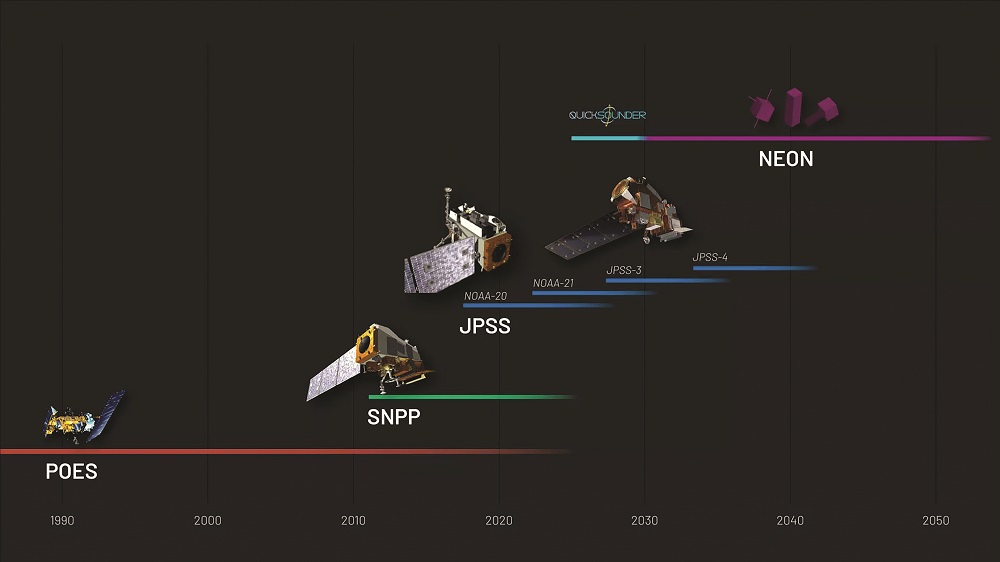SAN FRANCISCO – Ball Aerospace, Northrop Grumman, Orbital Micro Systems and Spire Global won contracts, announced Aug. 31, to design microwave sounders for the National Oceanic and Atmospheric Administration.
Under the contracts awarded by NASA on behalf of NOAA, the four companies will conduct studies and design sounders for the Near-Earth Orbit Network, or NEON, NOAA’s next generation of polar-orbiting weather satellites,
Colorado-based Ball and OMS, and Virginia-based Northrop Grumman each claimed $5 million firm-fixed-price contracts to design NOAA’s Sounder for Microwave-Based Applications (SMBA). The value of Virginia-based Spire’s contract was approximately $4.7 million.
After the firms complete the 12-month studies, NASA and NOAA will decide whether to proceed with development and manufacturing of the sounder.
Beyond JPSS
If approved, SMBA would begin gathering data on NEON satellites in low-Earth orbit in 2030, according to the NASA news release.
Microwave sounders provide key datasets for numerical weather models. NEON, the weather satellite constellation that succeeds the Joint Polar Satellite System, begins with a free-flying sounder and continue over decades with a series of small- to medium-sized satellites.
NOAA leads the NEON mission and provides funding, technical requirements and post-launch operations. NASA manages satellite development and launch.
Commercial Weather Instruments
Chuck Cash, Spire vice president of federal sales, said in a statement, “We’re proud to leverage Spire’s expertise in satellite technology to advance Earth observation and empower meteorologists, scientists and researchers with more precise insights into atmospheric properties.”
Ball is manufacturing two Weather System Follow-on Microwave satellites for the U.S. Space Force.
Northrop Grumman is building the Electro-Optical Infrared Weather System prototype for the Space Force.
Spire announced plans last year to equip its cubesats with microwave sounders from RAL Space, the British government’s national laboratory.
